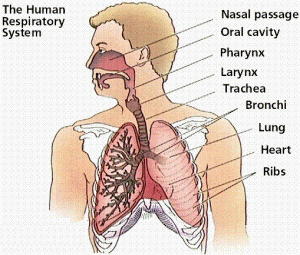
There are various respiratory problems covered in first aid training courses. These courses explain how to diagnose and treat injuries, teaching practical first aid techniques in case a crisis arises. The various diseases that require first aid treatment is numerous. It is recommended for employers and employees to learn first aid because accidents do not always occur when medical help is available.
Some respiratory emergencies include choking, suffocation, drowning, hanging or strangulation. In cases of choking, Heimlich maneuver is performed. In a situation where there is suffocation, drowning, hanging and strangulation, which all lead to asphyxiation, the safety of the victim is the primary concern. Before performing any first aid on the victim, make sure that the environment he/ she is out of danger. Check for responsiveness. If there is not breathing and no pulse, begin CPR.
During CPR, it is better to avoid giving out too many breaths. Because blood flow to the lungs in approximately only 20% to 33% normal, less breaths and reduced air volume is essential remove carbon dioxide when no pulse is detected. While performing CPR, rescuers must take a break from doing compressions to give rescue breaths. It is during these breaks that no blood flows to the brain and heart muscles. To reduce the consequences on blood flow, the rescuer should provide the two breaths as efficiently as possible to decrease the time the compressions are disturbed. If too many breaths are given or lasting more than required, it will lead to delivering less compressions than recommended, further decreasing blood flow.
When there is respiratory arrest, the breathing center in the brain is not functioning. There is no control over the breathing rate and depth, thus no control on the carbon dioxide levels in the blood. Several causes of respiratory arrest include stroke, cardiac arrest, shock, head injury and drugs that slow breaths. Within a few seconds after these emergencies, breathing will stop and the victim may appear to be gasping, which must not be mistaken for breathing.
Given the complexities of performing first aid, it is strongly advised that CPR courses be taken as these will be rescuers will learn the most up to date CPR training. Anyone can help save a life through first aid and CPR. Various institutions would gladly assist anyone to their certification.
Related topic:
